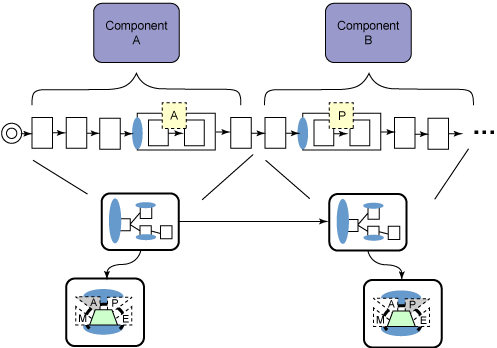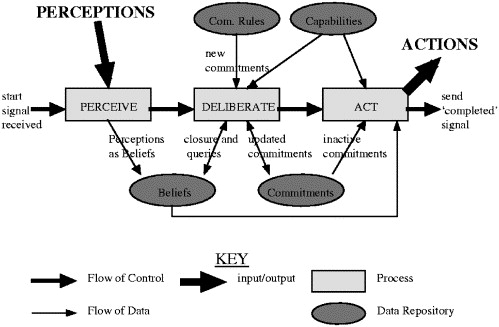The chances are high that you must have seen sci-fi movies where there are computing models, which are self-managed and they can even heal themselves magically in case of any damage. But, what if we tell you that this isn’t a distant dream anymore? Well, yes that’s for real; autonomic computing is a kind of computing model wherein the system is self-configured, self-healing, self-managed, and self-protected. It is designed in such a way that it mimics the nervous system of the human body in that the nervous system of the autonomous system acts, and reacts to stimuli irrespective of the conscious input of the individual.

Goal of Autonomic Computing
The objective of autonomic computing is to form systems that can run on their own with the capability of high level functioning, while maintaining the complexity of the system invisible to the user. Thus, such a computing system works with high level of artificial intelligence, while staying concealed to the user at the same time.
Similar to the way in which the human body acts and reacts without controlling functions, this kind of computing environment functions organically, when reacting to the input(s) that it collects. And, that is the most exciting aspect of such a computing system, because it almost works as a virtual human nervous system.
Vital Elements of an Autonomic Computing System
According to IBM, which is the leader in autonomic computing design, an autonomic computing system should have eight vital elements:
- The system must have specific and comprehensive knowledge of all its components in terms of the resources that it can access its capabilities, limitations, etc.
- It should have the ability to configure and reconfigure on its own automatically depending on the varying computing environment.
- It should be able to function around encountered issues by repairing itself or directing functions away from the problem.
- It should have the ability to optimize its performance so as to guarantee the most efficient computing process.
- The system should sense, recognize, and safeguard itself against different kinds of attacks to keep up the overall system integrity and security.
- An autonomic system should depend on open standards and cannot be present in a proprietary environment.
- It should expect the demand on its resources and at the same time should stay transparent to the users.
- It should have the capacity to adapt to its environment as it varies, communicating with nearby systems and establishing communication protocols.
Apart from IBM, there are few other industry leaders like Sun, Microsoft, and HP who are working hardin this field to achieve a breakthrough that can change the game around.
What Does Autonomic Computing Deliver?
Autonomic computing promises to deliver automated management of the computing systems. This capability alone gives basis for even more right from grid computing and seamless e-sourcing to dynamic e-business. And, of course, this is just the beginning; if the human nervous system could indeed be cloned then there are no points for guessing what could really happen. It’s definitely way beyond what one could possibly think of, and things would get even more interesting when such systems are put into use in the field of security.

Scope for Future Developments
Autonomic computing is one amongst the building elements of pervasive computing, which is an expected future computing model wherein minuscule or even invisible computers can be seen around us, interacting via the increasing interconnected networks. In future, most of the tasks related to such a system may not require human intervention, but this dream is still far from being anywhere close to reality; at the same time, it’s not as far as it used to be.
And, that’s not all, just like autonomous computers, scientists are also working on autonomous cars (also termed as a robotic car or casually a driverless car) that can drive on their own, without the help of a human driver.
Basically, autonomous cars can sense the surrounding with technologies like radar, laser, computer vision, and GPS. The advanced control systems that are integrated within can interpret the information to find suitable navigation paths and detect any hurdles. The maps are normally updated depending upon sensory input in such a way that they can find their path via uncharted surroundings.
Furthermore, people moving around with a laptop packed on their backpack are a common sight these days, so scientists are also working on something really groundbreaking to change things radically with the idea of wearable computers. Such a technology is not for sheer entertainment, but can also be of great professional help.
In simple terms, a wearable computer is a computing gadget that is light and small enough to be sported on an individual’s body without any discomfort.
